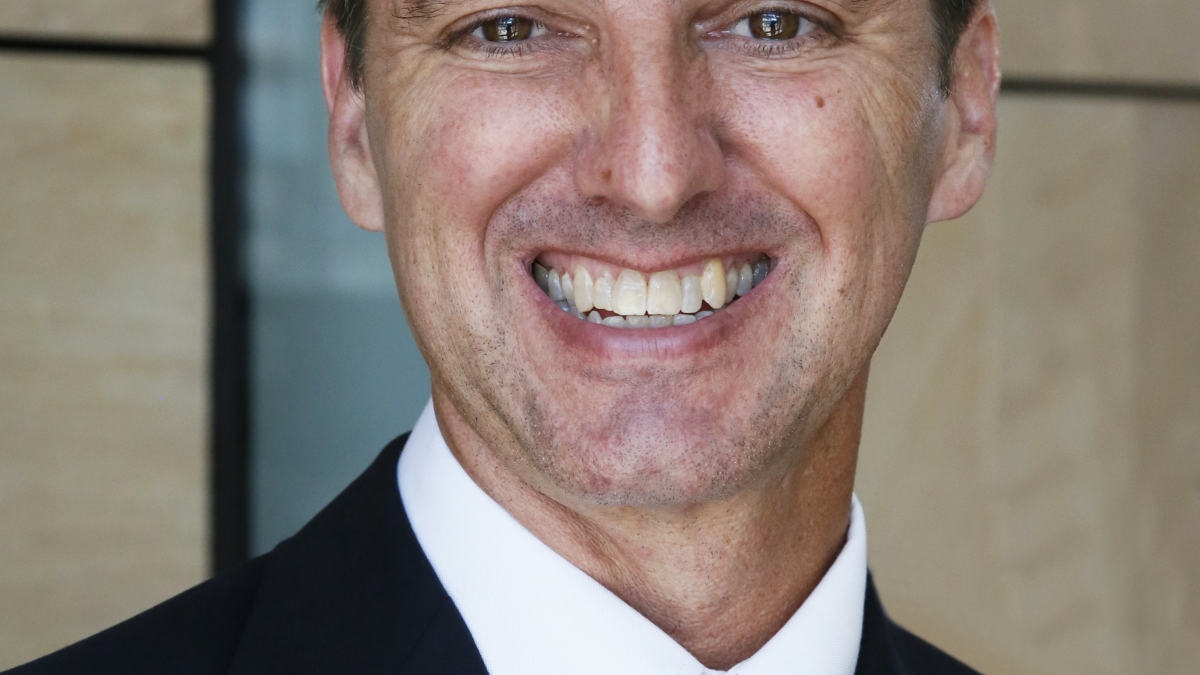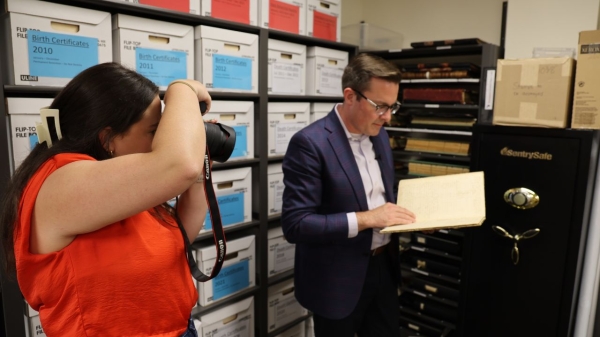The opioid consumption turned crisis: Q&A with ASU health law expert James Hodge

James Hodge, professor at the Sandra Day O’Connor College of Law at ASU, says President Donald Trump's declaring the opioid crisis a public health emergency is significant "because it establishes the opioid epidemic as a national crisis the likes of which has never been classified as such before in the U.S."
When people talk about drug problems, drug overdose and drug addiction, most people associate these situations with substance abuse of the illegal kind. However, the prescription bottles in household medicine cabinets are partially to blame for the most recent health crisis.
Opium, which is a narcotic acquired from the opium poppy, and all its derivatives such as heroin, prescription pain relievers like hydrocodone and oxycodone, and synthetic opioids, such as fentanyl, are known as opiates. In 2015, the addiction and misuse of opioids resulted in more than 33,000 overdose deaths, according to the National Institute on Drug Abuse.
This month, President Donald Trump declared the opioid crisis a public health emergency. James Hodge, professor at the Sandra Day O’Connor College of Law at Arizona State University, spoke to ASU Now about the state of the opioid crisis.
Hodge's research delves into multiple areas of health law, public health law, global health law, ethics and human rights. He is a national expert on emergency legal preparedness, obesity laws and policies, vaccination laws, and public health information privacy.
Question: Why is the opioid consumption being considered a crisis, calling for government action?
Answer: The drastic escalation of opioid abuse and corresponding deaths in the U.S. over the past five to 10 years has vaulted this preventable threat to the epicenter of national concern. Millions of Americans are hooked on opioids in prescription and illicit forms, hundreds of thousands are seriously addicted, and tens of thousands will die in 2017 (as they have the last 10 years and counting) of opioid abuse.
Most of these deaths are preventable, especially related to single doses of highly potent forms of opioids such as carfentanyl, that can kill users in an instant. Widespread opioid use presents a “Medusa of epidemics” — it impacts all ages, sexes, races and socioeconomic classes, although specific populations are especially vulnerable, including persons in rural environments or those experiencing homelessness.
Q: Congress passed a law that many say weakened DEA enforcement efforts against drug distribution companies. What is the law currently in place regarding opioids? How does that differ from laws in recent decades?
A: Upwards trends in morbidity and mortality related to opioid use continue despite significant law and policy objectives aimed at curbing the epidemic such as:
- Punishments for illicit drug users have increasingly turned away from incarceration and toward rehabilitation.
- States have proposed and implemented bipartisan reforms designed to make available essential life-saving drugs, such as naloxone, for victims of overdoses.
- Good Samaritan laws have been reformed or clarified to apply to persons attempting to quell immediate risks to victims as well.
Six state governors and several tribal officials have declared formal states of public health emergency, and Congress authorized major funding and other initiatives through the CARE Act of 2016 and 21st Century Cures Act.
That same year the Centers for Disease Control and Prevention published national guidelines regarding prescription painkillers emphasizing significant reductions in their use for common conditions and recommending doctors encourage patients to initially use non-addictive painkillers like ibuprofen. Other jurisdictions have proposed even more aggressive legal tactics.
Legal responses to the rise of opiates and their public health impacts have the potential to quell the epidemic, but how these laws authorize governmental interventions to address negative repercussions while allowing free-flowing access to prescription and illicit opioids entails an array of difficult trade-offs.
Q: What drug regulation changes, or lack thereof, have been made in an attempt to curb drug consumption? What are changes that haven’t been made that some say would be more effective?
A: Laws and policies to slow consumption have focused considerably on limiting access to prescription opioids, redirecting criminal prosecutions of those hooked toward rehabilitation, generating better data to understand the nature of the epidemic and protecting individuals from liability when they act as Good Samaritans. Additionally, considerable penalties have been initiated against unscrupulous doctors, providers and distributors flooding the U.S. market with prescription opioids.
Q: The president declared the opioid crisis a public health emergency. What does that mean, specifically? Does it unleash government resources, or is it simply a label?
A: It is a significant announcement because it establishes the opioid epidemic as a national crisis the likes of which has never been classified as such before in the U.S. The opioid epidemic is the deadliest public health emergency ever to be labeled since this nomenclature arose post-9/11. It means more resources, personnel and treatment can be devoted to persons already at risk, as well as prevention of future cases if limited resources are used efficaciously.
Q: What is the difference between a national emergency and a public health emergency?
A: Many policymakers have called for a national emergency to respond to the opioid crisis because it allows even greater federal powers to respond, as well as significant new resources without separate congressional approval. President Trump may ultimately declare a national emergency just as President Obama did months after an initial Public Health Emergency Declaration in response to the 2009-10 H1N1 flu. While a Public Health Emergency Declaration is meaningful, it does not carry the imprimatur of a federal-wide response that only a national emergency can authorize.
More Law, journalism and politics

Native Vote works to ensure the right to vote for Arizona's Native Americans
The Navajo Nation is in a remote area of northeastern Arizona, far away from the hustle of urban life. The 27,400-acre…

New report documents Latinos’ critical roles in AI
According to a new report that traces the important role Latinos are playing in the growth of artificial intelligence technology…

ASU's Carnegie-Knight News21 project examines the state of American democracy
In the latest project of Carnegie-Knight News21, a national reporting initiative and fellowship headquartered at Arizona State…